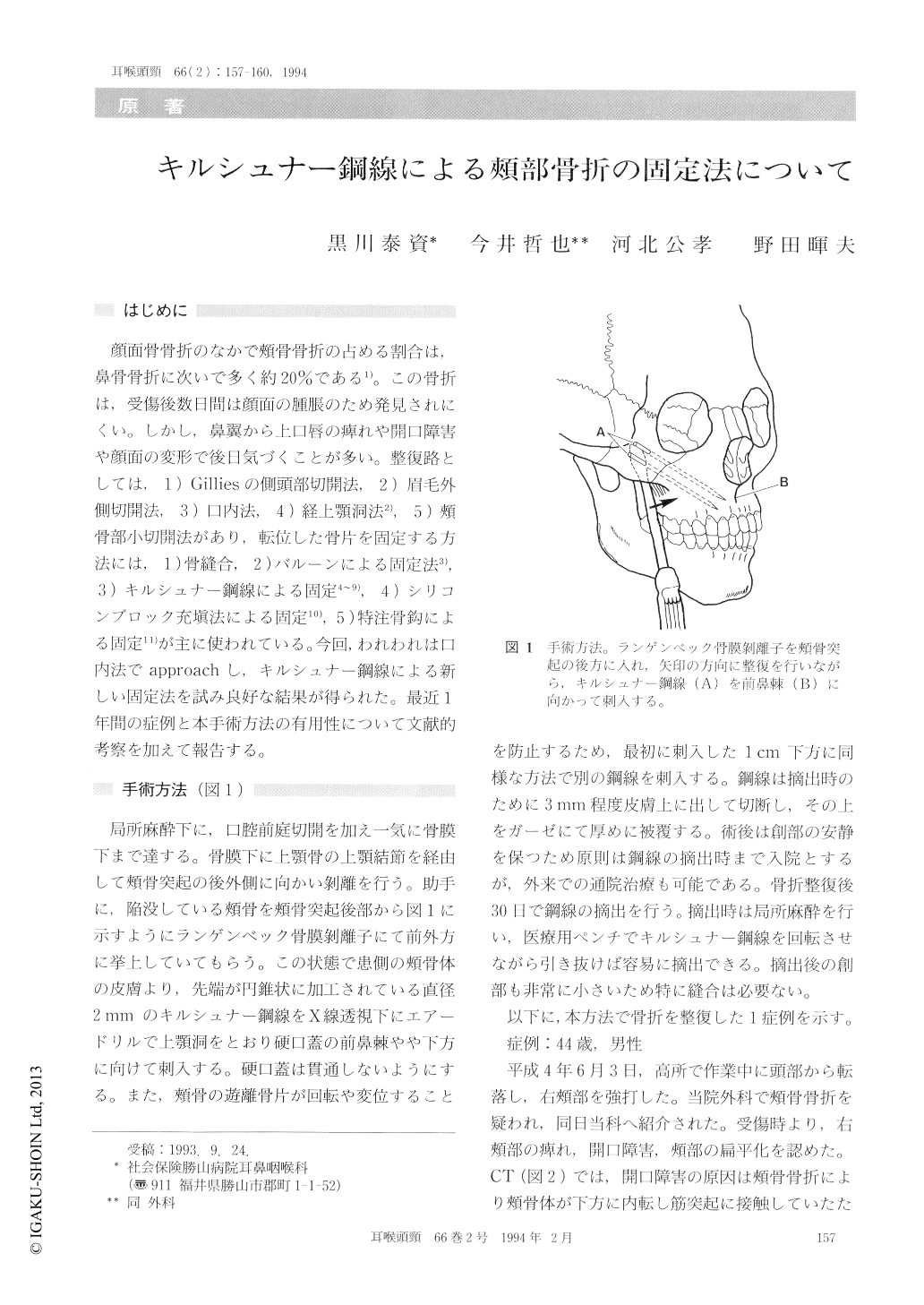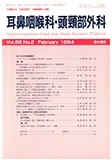Japanese
English
- 有料閲覧
- Abstract 文献概要
- 1ページ目 Look Inside
はじめに
顔面骨骨折のなかで頬骨骨折の占める割合は,鼻骨骨折に次いで多く約20%である1)。この骨折は,受傷後数日間は顔面の腫脹のため発見されにくい。しかし,鼻翼から上口唇の痺れや開口障害や顔面の変形で後日気づくことが多い。整復路としては,1) Gilliesの側頭部切開法,2)眉毛外側切開法,3)口内法,4)経上顎洞法2),5)頬骨部小切開法があり,転位した骨片を固定する方法には,1)骨縫合,2)バルーンによる固定法3),3)キルシュナー鋼線による固定4〜9)シリコンブロック充填法による固定10),5)特注骨鈎による固定11)が主に使われている。今回,われわれは口内法でapproachし,キルシュナー鋼線による新しい固定法を試み良好な結果が得られた。最近1年間の症例と本手術方法の有用性について文献的考察を加えて報告する。
The new internal wire pin (Kirschner wire) fixa-tion for the tripod malar fracture was used in three cases. An incision was made at the upper canine fossa under local anesthesia, exposing the anteriorantral wall, the zygomatic eminence was carefully elevated up forward with a bone elevator. Simulta-neously, drill was correctly aligned and the first wire was advanced to the anterior hard palate. The second wire was drilled at 1 cm below the first wire drilling point on the cheek and driven to the hard palate. The wires were left exposing out of skin for 4 weeks, then removed under local anesthesia.
There were no complications such as cheek deformity and bone infection in these series. This technique may be beneficial in mild cases of tripod malar fracture.

Copyright © 1994, Igaku-Shoin Ltd. All rights reserved.


